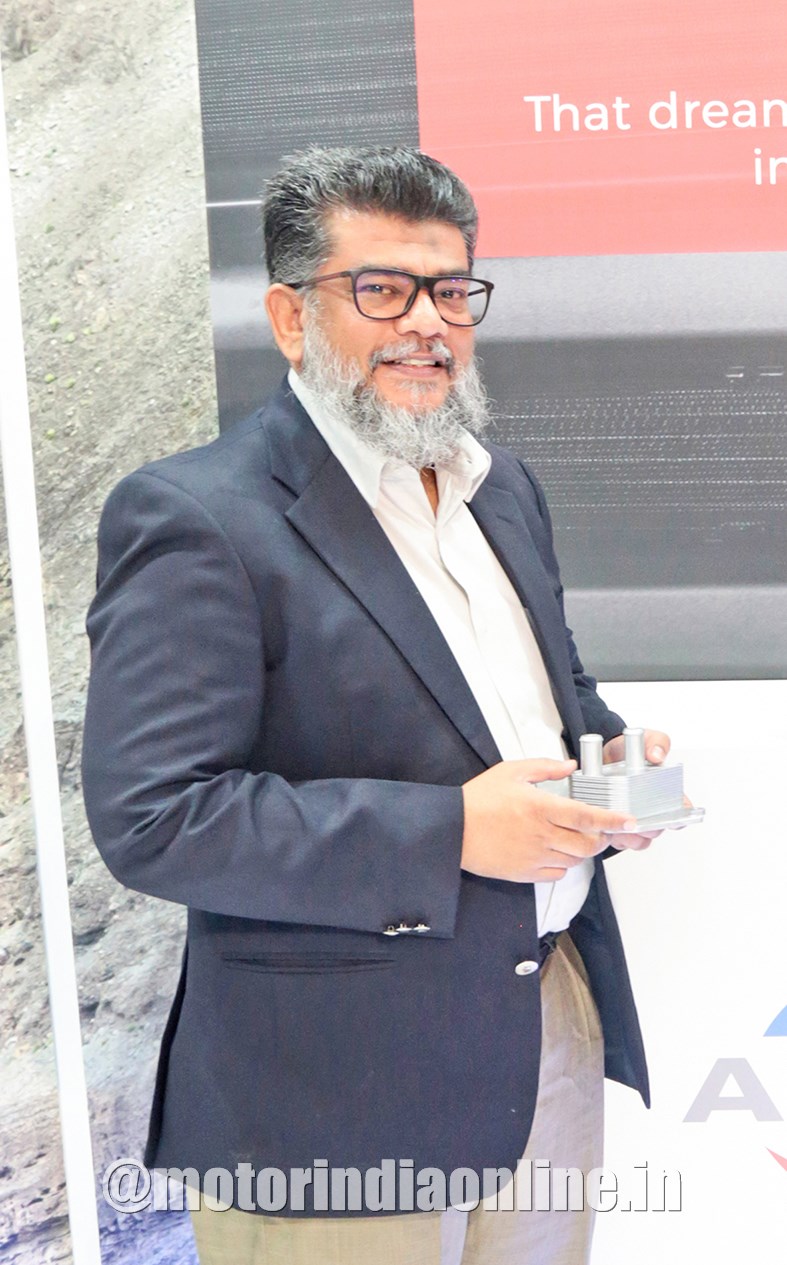As a specialist in heat transfer technologies, Alkraft Thermotechnologies is aware of the crucial role it plays in the transition to BS-VI norms, and in its effective implementation post April 2020. In a candid chat, Mr. Zakkir Hussain, CEO, Alkraft, provides insights into the company’s approach and strategy for a smooth transition to the new emission era, and the implications of the imminent change for Alkraft and for the industry as a whole.

Excerpts:
Market Impact
With the move to BS-VI, vehicles will have higher power than they have today in the same operating segments. This necessitates high performance products that are optimized for cost and fuel efficiency, especially in the case of heat transfer systems. Alkraft’s BS-VI heat exchangers have been designed ground-up for specific challenges faced by Indian OEMs. Our products feature highly optimized heat transfer performance, and are designed to reduce parasitic losses to improve fuel efficiency. We have been able to achieve this with our proprietary surface geometries and a holistic design approach.
Current BS-IV products cannot be used for BS-VI vehicles, and hence ensuring that the BS-IV product inventory is completely exhausted across our supply chain before April 2020 is of paramount importance, and we are working towards this.
Due to these unique challenges faced by the component industry, our OE customers have supported us by reducing the number of part numbers through standardization across their product range.
Cost implications
The cost of BS-VI vehicles is expected to be higher by up to 15% compared to BS-IV, primarily due to higher import content.
With our laser focus on customer success, the Alkraft team has developed efficient designs, minimizing the cost increase on our products. In fact, in a number of cases we were able to develop BS-VI variants at the same prices of BS-IV, predominantly due to our highly efficient designs, thus helping to temper the overall cost increase.
For fleet owners to be able to absorb the price rise, a GST reduction on commercial vehicles is definitely needed. It would give the sector a much-needed boost if additional incentives like a favorable scrappage policy were offered for the purchase of BS-VI vehicles so as to offset the cost increase.
Challenges
As indicated earlier, the main challenges will be inventory management, maintaining fuel efficiency and controlling the cost increase. Another big challenge would be the maintenance and service of BS-VI vehicles. With the engines being more sophisticated with more electronics, the entire aftermarket service and sales network needs to be geared up to handle the change.
Opportunities
The biggest opportunity would be the fact that the Indian industry would be on par with global markets, which presents tremendous scope for exports to emerging, and even developed markets.
Also, with many parts being imported, Indian component manufacturers will get a bigger opportunity to support OEMs with local solutions that would help bring costs down.
BS-VI in itself carries huge significance, given the substantial reduction in emission levels compared to BS-IV. Given that the complete adoption of EVs is still faced with major infrastructure and cost challenges, other technologies like alternative fuels also need to be given due consideration. Also, there are applications that simply cannot move to EVs, at least in the next five to ten years, so BS-VI needs to get its due from policy makers.
Outlook
The outlook for this year does not look rosy. We are looking at negative growth in the CV industry. If at all the segment has to grow this year, GST reduction and some incentives from the government is a must.
We expect a pre-buy to happen, but only in Q4 during January and February next year. A highly incentivized scrappage policy will help in improving the outlook, as well as in reducing emissions. There are a number of areas that can be improved, and the industry needs to work closely with government to ensure that we return to robust growth at the earliest possible.